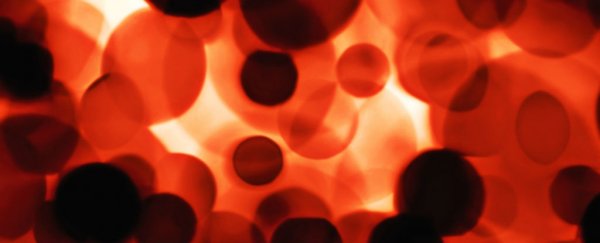Two papers published this week have revealed that scientists are "tantalisingly close" to being able to produce large quantities of blood cells from a patient's own stem cells.
This would revolutionise treatments for people who need frequent blood transfusions, as well as those with bone marrow disorders who struggle to find a match with a healthy donor.
"For many years, people have figured out parts of this recipe, but they've never quite gotten there," Mick Bhatia from McMaster University in Canada, who was not involved with either study, told Nature News.
"This is the first time researchers have checked all the boxes and made blood stem cells."
Stem cells are specially programmed cells whose job is to create all the other cells in the body.
There are two different types: embryonic, which are located in an embryo before the cells start to specialise; and adult stem cells, which are used to repair and replace old, worn-out cells.
Since 2006, when adult mouse cells were converted back into a type of adult stem cell called induced pluripotent stem cells (iPS cells) for the first time, the field has been pushing towards producing new blood cells.
The goal is that a patient could have their own cells extracted, converted into iPS cells, and from those, a limitless supply of the patient's blood could be produced - no donor required.
"This step opens up an opportunity to take cells from patients with genetic blood disorders, use gene editing to correct their genetic defect and make functional blood cells," says Rio Sugimura from Boston Children's Hospital, one of the researchers behind the recent studies.
"This also gives us the potential to have a limitless supply of blood stem cells and blood by taking cells from universal donors. This could potentially augment the blood supply for patients who need transfusions."
In the first paper, the researchers used both iPS and embryonic stem cells and exposed them to chemical signals that direct stem cells to change into specialised cells, such as hemogenic endothelium (the precursor to blood cells).
Next, the team added transcription factors (genes that code for proteins that 'transcribe' DNA), which was able to force the cells into a blood-forming state.
The researchers discovered that five transcription factors (RUNX1, ERG, LCOR, HOXA5 and HOXA9) were required to force the cells into the correct form.
When they added these new cells to mice, they integrated and formed multiple types of blood cells, including both red blood cells and immune cells.
"We're tantalisingly close to generating bona fide human blood stem cells in a dish," says George Daley from Boston Children's Hospital, head of the research lab for the new paper. "This work is the culmination of over 20 years of striving."
The second paper is slightly different although equally important to the field. Instead of using iPS or embryonic cells, a team from Weill Cornell Medicine in New York managed to use adult stem cells taken from the lung walls of mice.
The team identified four separate transcription factors (Fosb, Gfi1, Runx1, and Spi1), and were able to turn the cells into blood cells without first turning them into iPS cells.
Instead, the extracted cells had the four transcription factors added to their genomes, and kept in a petri dish designed to mimic the environment inside human blood vessels.
The cells morphed into blood cells, and began multiplying. They were also effectively added into mice, which lived with minimal issues, over 1.5 years in the lab.
The head researcher of this project, Shahin Rafii, says the difference between his and Daley's team's techniques is pretty significant.
"Because he bypassed the iPS-cell stage, Rafii compares his approach to a direct aeroplane flight, and Daley's procedure to a flight that takes a detour to the Moon before reaching its final destination," says Amy Maxmen at Nature News.
Although that analogy might make you think Rafii's method is the superior choice, right now, we still don't know which way will be more effective in humans, as the results have only been demonstrated in animal models to work effectively.
But being able to change human cells into proliferating blood cells is a fantastic achievement for both groups, and it's always exciting to see competing science in action.
The studies have both been published in Nature, and you can access Daley's here and Rafii's here.
